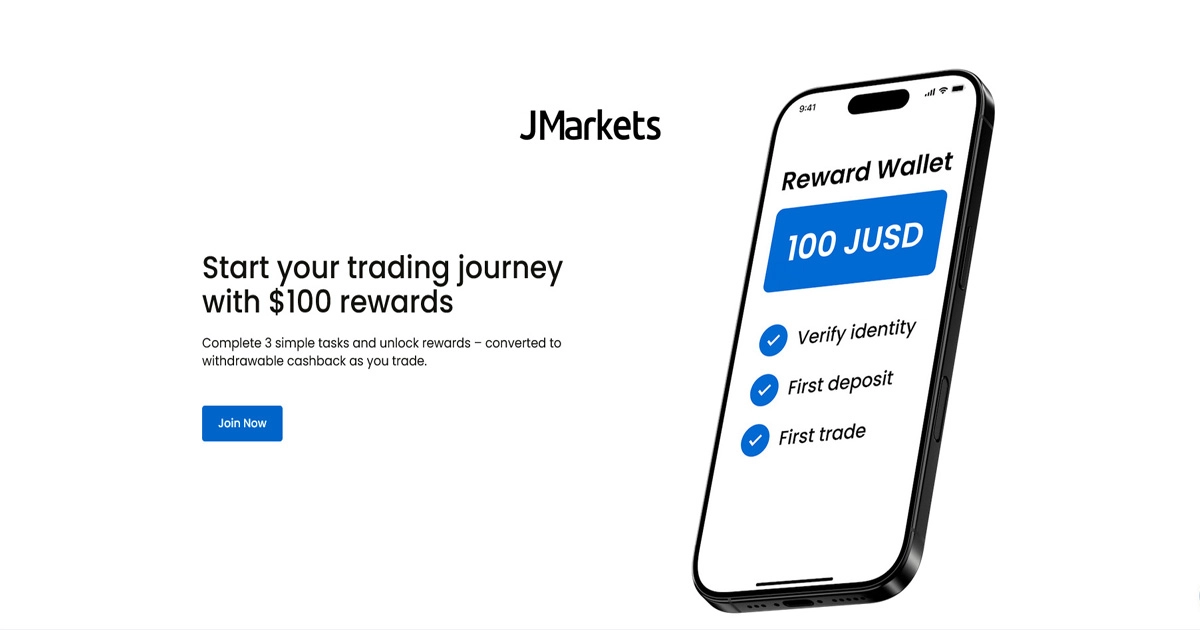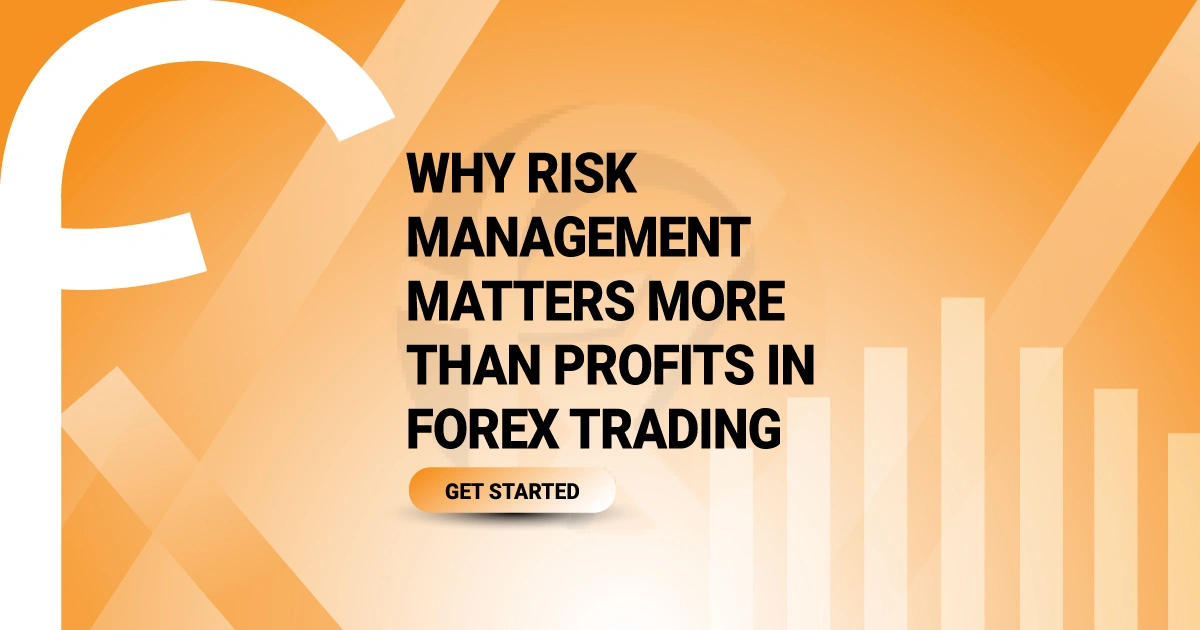The numbers tell a sobering story about risk management in forex trading. Statistics show that about 75% of retail forex traders lost money in 2024. Most traders chase quick profits and exciting market moves, but this misplaced focus leads them to failure.
Smart traders know better. They use forex risk management strategies to protect their capital as they pursue profits. The 2008 financial crisis showed this principle at work when the S&P 500 dropped 57% and wiped out trillions in market value. Even professional institutions failed to protect their positions during this catastrophic event. To name just one example, see how a well-laid-out risk/reward strategy can make you profitable even when less than half your trades succeed. This makes risk management the key to survival in the ever-changing world of forex trading.
Why Chasing Profits Fails in Forex Trading
Most beginner traders jump into forex markets dreaming of overnight success. Studies show a shocking 97% lose their entire accounts in their first month of trading. These numbers tell us the hard truth about forex trading - it's not the quick money-maker many people think it is.
The illusion of quick riches
Quick money dreams are the foundations of most trading failures. Too many traders start forex with wild expectations. They believe they'll get rich right away without putting in the work or gaining experience. Social media influencers and flashy ads make it worse by showing off luxury lifestyles they claim came from forex profits.
New traders don't see that forex trading is different from real business ventures. Unlike starting a company or investing long-term, forex works like a see-saw - someone has to lose money for another to make it. The truth is about 90% of regular traders' money ends up with big institutions and market makers.
The dream of fast money pulls people in hard. Early wins, which usually come from luck, make traders overconfident about their abilities. They start thinking they've figured everything out when they've just gotten lucky with market swings.
On top of that, easy access to high leverage makes quick riches seem even more possible. Brokers let traders use leverage that can make gains look huge, but these same tools can wipe out accounts just as fast.
The truth hits hard: good forex traders usually need years of practice. Many pros say it takes 3-5 years to make steady profits. That's a far cry from the overnight success story new traders hope to live.
How profit obsession leads to reckless trading
Money fixation kicks off a dangerous cycle for traders. Their focus on cash triggers emotional responses that mess up clear thinking. The irony? The more you obsess about making money, the less likely you'll succeed.
This obsession shows up in several bad habits:
- Overtrading: Trying to win back losses or chase profits through too many trades
- Abandoning risk management: Throwing out safety measures like position sizing and stop-losses
- Emotional decision-making: Letting feelings instead of strategy guide trades
- Overleveraging: Taking huge risks hoping for bigger returns
The mental strain gets intense as traders ride the emotional roller coaster of wins and losses. They feel brilliant during good runs and worthless during bad ones.
Profit-hungry traders often fall into "revenge trading" after losses. Instead of seeing losses as normal, they make rushed trades to get their money back right away. This usually starts a nasty cycle where emotional choices lead to bigger losses.
Market volatility hits profit-chasers the hardest. Forex runs 22 hours a day for 251 trading days each year, which means more chances to make emotional mistakes. Traders who only care about profits often stick to their screens, making worse decisions as their emotions take over.
The key point? Profit obsession blinds traders from what really matters - following a solid process. Successful traders stick to their plans and stay disciplined no matter what happens. They know short-term results mean little, but good habits lead to long-term success.
The twisted truth is that caring too much about profits makes them harder to get. Traders only start winning when they focus less on money and more on doing things right in this tough forex market.
Understanding Why Risk Management is King
A sobering truth dominates the high-stakes world of forex: speculating as a trader is not gambling. The difference between gambling and speculating is risk management. Risk management matters more than any other factor in forex trading - more than your trading strategy, technical analysis skills, or market knowledge.
Protecting your trading capital
Your absolute top priority should be preserving your trading capital. Poor risk management strategies can lead to substantial losses that drain your account faster. Your trading capital erodes directly from unmanaged risks, which hurts overall profitability.
Successful traders live by one golden rule: never risk more than 1-2% of your account on a single trade. This small percentage makes a huge difference over time. Let's look at this scenario: risking 10% of your balance on each trade means just ten consecutive losses could empty your trading account. If you limit yourself to 2% risk per trade, you'd need to lose 50 consecutive trades to wipe out your account. This mathematical buffer gives you space to learn and adapt.
The 2% rule isn't random - professional traders follow it religiously. As one expert explains: "For forex trading beginners, the recommended risk tolerance is no more than 2% of the total account value". This limit protects you from the psychological damage of big losses while keeping capital safe for future opportunities.
Position sizing plays a vital role in protecting capital. You can calculate the right position sizes for each trade by determining your risk tolerance first. This keeps your exposure consistent and manageable. This disciplined approach stops you from overextending during emotional market periods.
Stop-loss orders serve as a basic protective measure. These automated exit orders close your position at preset price levels, limiting potential losses whatever the market does. Opening any position in financial markets becomes "no different from gambling" without these mechanisms.
Surviving to trade another day
Success in forex needs time and persistence. Industry experts say it takes substantial time and effort to become even slightly successful. Many professionals state it takes 3-5 years before consistent profitability emerges. This timeline shows why surviving long enough to develop expertise is vital.
Risk management helps you survive by preventing the catastrophic account blowups that eliminate most traders early. Learning risk management gives you "the ability to stick around for the long haul, and sets you up for the best chance at success".
The math behind proper risk management becomes clear when you look at the risk-to-reward ratio. You can stay profitable with a minimum 1:2 risk-reward ratio even if you lose more than half your trades. This explains why professional traders focus more on managing risk than chasing profits.
Accepting losses as part of trading is another key survival skill. Experienced traders know this: "In trading, losses are part of the norm, so a trader must learn to accept losses as part of the process. Losses are not failures". This mindset helps you stay emotionally balanced during inevitable drawdowns.
Risk management also protects you from "revenge trading" after losses. Setting risk parameters before entering positions creates objective guidelines that stop emotional responses to market movements.
Risk management in forex trading changes what could be gambling into a disciplined business approach. You position yourself to survive the learning curve and develop skills for long-term success by focusing first on keeping your capital safe rather than maximizing profits.
Common Forex Trading Mistakes That Ignore Risk
About 60% of retail forex traders lose money because they make critical mistakes and ignore simple risk management principles. These aren't just small missteps—they can destroy your trading capital quickly. Let's look at three dangerous risk management mistakes that keep sinking trading accounts.
Overleveraging small accounts
Traders who use excessive borrowed funds to control positions much larger than their account balance face overleveraging. Small accounts suffer the most from this dangerous practice. Traders with limited capital often max out their leverage to generate bigger profits from small market movements.
What makes overleveraging so destructive? High leverage acts as a double-edged sword that magnifies both profits and losses equally. A 1% market move might seem small, but with 100:1 leverage, this modest change means a 100% effect on your capital.
The statistics paint a sobering picture:
- Nearly 60% of retail investor accounts lose money when trading CFDs with certain providers
- Bigger lot sizes from overleveraging lead to greater losses that quickly drain trading accounts
- Experienced traders should never use all available margin, whatever the market conditions
You risk dangerous overleveraging when you put more than 3% of trading capital on a single trade, so your chances of a margin call and forced liquidation increase.
Ignoring stop-losses
Trading without stop-loss orders shows another catastrophic risk management failure. Stop-loss orders automatically close your position at a set price level and limit potential losses whatever the market does. Many traders still choose not to use this essential protection.
Skipping stop-losses leads to clear problems:
- Your losses have no limits without a defined exit strategy
- You make emotional decisions during bad market moves
- You feel stressed from watching positions constantly
Traders skip stop-losses for many reasons—they hope markets will turn around, trust their analysis too much, or won't accept being wrong. Markets can move against you more than predicted, especially during economic news, global events, or changes in market sentiment.
The truth stays clear: trading without proper stop-loss orders looks more like gambling than trading. Smart traders know losses will happen—controlling their size through good risk management makes the difference.
Revenge trading after losses
Revenge trading might be the most destructive psychological mistake in forex. Traders fall into this pattern after taking losses, especially bigger ones than usual. They try to "get even" with the market through rushed, emotional trades.
Revenge trading stems from:
- The market creates anger, frustration, and feelings of unfairness
- An intense need to recover losses right away
- Poor judgment leads to abandoned risk management rules
Revenge traders make terrible choices—they increase position sizes recklessly, ignore stop-losses, and trade without proper analysis. These trades rarely succeed and most traders who do this end up blowing their accounts.
Traders often can't see when they're revenge trading. Losses create a downward spiral where simple trading mistakes pile up and create bigger and bigger losses.
These three critical mistakes show why risk management matters more than any strategy or technical analysis in forex trading. The best systems will fail without proper risk controls under the weight of these common errors.
How Forex Risk Management Strategies Save Your Account
Proper forex risk management strategies protect your hard-earned capital in real ways, not just theory. Successful traders don't try to predict market direction. They focus on specific protective measures that save accounts when markets swing.
Setting realistic risk per trade
The life-blood of forex trading risk management lies in limiting your risk per trade to a small percentage of total capital. You should risk no more than 2% of your available trading capital per position. This creates a mathematical safety net for your account. A proper trading system means you could be wrong 50 times in a row before losing your account—something that rarely happens.
You can implement this principle by:
- Setting your risk tolerance first (1-2% works best for beginners)
- Working out position size based on this risk
- Keeping risk percentages fixed during emotional market swings
This method keeps you from overexposing yourself on single trades and reduces the mental impact of losses. Position sizing means calculating how much capital you should use based on your account balance, risk comfort level, and where you place your stop-loss.
Start by knowing how much you can lose comfortably. Use this number to set position sizes that keep your exposure steady across different market conditions. This disciplined approach stops you from taking huge positions. Professional traders only risk 1-5% of their capital on each trade.
Using stop-loss and take-profit orders wisely
Stop-loss and take-profit orders act as guardrails for your trading strategy. These automated exit orders close positions at preset prices and remove emotions from your decisions. To name just one example, trading without a stop-loss can trap you in "just one more time" thinking as losses grow.
Two main types of stop-loss orders matter:
Standard stops: These close your position when the market hits a specific price level
Trailing stops: These follow your position in profitable trades, keeping the same distance from current price. They protect profits without capping them
Take-profit orders work with your stop-loss strategy and close positions at your profit target. This creates a complete system that limits losses and locks in gains.
Stop-loss and take-profit orders create what traders call the risk-reward ratio. If you place your stop 29 pips below entry, setting your take-profit 58 pips above creates a 1:2 risk-reward ratio. This structure lets you profit even when less than half your trades succeed.
My trading experience shows that clear rules with both stop-loss and take-profit orders help manage risk quickly. Trading without both tools becomes gambling. These simple but powerful tools turn speculative activity into a business approach.
Risk management strategies ended up saving accounts. They give clear boundaries for losses and profits, take emotion out of trading, and create mathematical edges that work for you across hundreds of trades.
Building a Risk-First Trading Mindset
A risk-first mindset sets successful forex traders apart, yet beginners often miss this crucial point. Technical strategies and tools play their part, but a trader's mental approach to risk and loss makes the real difference between profit and loss. Let's look at two key mental changes needed to become skilled at forex risk management.
Accepting losses as part of the game
Losing is inevitable in forex trading. No way around it. Traders who can't accept losses develop harmful thought patterns that ended up destroying their accounts. The best traders in the world face regular losses—their response to these losses sets them apart.
Professional traders see losses as a normal part of business. They bounce back from 100 lost trades in a month because each loss teaches them something valuable. This point of view changes losses from emotional disasters into useful learning experiences.
These psychological benefits come from accepting losses:
- Better trading decisions with less emotion
- Less stress when markets go down
- Better adherence to trading plans
- Breaking free from revenge trading urges
Most importantly, traders need to know this is a marathon, not a sprint. Mark D. Cook, among the world's top technical traders, said: "The true winner is the one who perseveres. The race is a marathon and not a sprint". This outlook helps traders stay disciplined through tough losing streaks.
Learning to "smile when you lose" might sound strange, but it can revolutionize your trading mindset. Every loss shows you something about market patterns, strategy tweaks, or mental weak spots. Fix these issues and your trading gets stronger.
Focusing on process over outcome
Professional traders care about process while amateurs chase profits. This difference explains why risk management rules forex trading.
Smart traders know they don't make trades work—they just position themselves right when others act. Moving focus from money to method helps traders beat the mental blocks causing bad decisions.
Too many traders burn out watching outcomes instead of what they control. Dr. Andrew Menaker, who coaches traders on psychology, wants them to focus on what they can control (process) rather than what they can't (outcome).
Money thoughts during trading don't help performance. These thoughts often hurt results. Good profits naturally follow when you focus on trading right—waiting for quality setups matching your criteria.
Without doubt, thinking about process helps traders take the long view. Good statistical outcomes become more likely over time when you stick to your plan and manage risk well, even if some trades fail.
Here's the key: Good decisions deserve celebration, whatever the trade result. Following your plan, handling risk well, and making smart strategy choices counts as success—even with losing trades.
Building this risk-first trading mindset helps you exceed the emotional swings that wreck most forex accounts. The process becomes more important than chasing profits. This approach shows why risk management beats profit-hunting in forex trading.
Real-World Examples: Traders Who Won by Managing Risk
Real traders' stories offer compelling proof that risk management rules supreme in forex trading. Their wins and losses show patterns that theory alone can't explain.
Case study: Surviving volatile forex markets
The Swiss National Bank's unexpected removal of the franc's peg to the euro on January 15, 2015, changed everything. This move triggered a massive +30% swing in EUR/CHF within a day, and daily volatility jumped from 8% to 50%. Many traders lost everything, but those who practiced careful risk management weathered this black swan event.
Big corporations excel at managing risk on a large scale. Studies show that companies get better results when they combine financial derivatives with natural hedges instead of using just one approach. Coca-Cola and IBM, to name just one example, used diverse hedging strategies that protected them during extreme market swings. Rolls-Royce, however, faced financial losses because of inadequate hedging.
Lessons from traders who blew up accounts
Bill Lipschutz, now a forex legend, learned about risk management the hard way. He turned $12,000 into $250,000 during college, but lost it all on one trade. This crushing loss became his wake-up call that taught him "the importance of risk management in the financial market".
Philip found that "managing risk effectively is as important as identifying trading opportunities". His mentor taught him to:
- Never risk more than he could afford to lose
- Set appropriate stop-loss orders
- Manage leverage properly
- Maintain psychological resilience
Traders who bounce back from blown accounts agree that losses are normal in trading. One resource points out that "in trading, losses are part of the norm... Losses are not failures". These traders suggest starting with smaller positions after a major loss and slowly increasing risk as results improve.
The lesson keeps repeating itself - successful forex trading isn't about avoiding losses. It's about making them manageable through disciplined risk control.
Conclusion
The evidence speaks for itself - risk management matters more than profits in forex trading. It's the foundation that builds sustainable success. Our exploration shows how chasing profits destroys accounts while disciplined risk management helps preserve capital during market turbulence.
The stark 75% failure rate among retail traders reminds us that forex isn't a get-rich-quick scheme. The market demands patience, discipline, and respect for risk. Successful traders know this basic truth: while market movements remain unpredictable, they can control their risk exposure on each trade.
Trading mathematics reveals a hard truth - even the most accurate trading strategy will fail without proper risk management. A mediocre strategy with excellent risk controls can generate consistent profits over time. This explains why professional traders focus less on market predictions and more on limiting potential losses.
Most new traders resist this counterintuitive approach. They need to accept losses as normal and focus on process rather than outcome. This psychological breakthrough leads to long-term success. Traders who survived market crashes prove that risk management isn't just theory - it makes the difference between account destruction and trading longevity.
I urge you to change your viewpoint from "How much can I make?" to "How much could I lose?" This mental adjustment turns gambling into professional speculation. Quick profits might attract traders to forex initially. However, only those who become skilled at risk management stay in the game long enough to achieve consistent profitability.
FAQs
Q1. Why is risk management crucial in forex trading? Risk management is essential in forex trading because it protects your trading capital and allows you to survive market volatility. By limiting potential losses and preserving your account, you can trade for the long term and develop the skills necessary for consistent profitability.
Q2. What is the 2% rule in forex trading? The 2% rule is a risk management principle that suggests never risking more than 2% of your total account balance on a single trade. This approach helps protect your capital from significant losses and provides a buffer to withstand multiple losing trades without depleting your account.
Q3. How can traders avoid the trap of chasing quick profits? Traders can avoid chasing quick profits by focusing on the trading process rather than outcomes. This involves developing a solid trading plan, adhering to risk management principles, and accepting that losses are a normal part of trading. By prioritizing consistent execution over short-term results, traders can build sustainable success.
Q4. What are some common forex trading mistakes that ignore risk? Common forex trading mistakes that ignore risk include overleveraging small accounts, trading without stop-loss orders, and engaging in revenge trading after losses. These behaviors can lead to rapid account depletion and emotional decision-making, undermining long-term trading success.
Q5. How can traders develop a risk-first trading mindset? Traders can develop a risk-first mindset by accepting losses as part of the trading process and focusing on executing their trading plan consistently. This approach involves celebrating good decision-making regardless of individual trade outcomes and viewing losses as learning opportunities rather than failures.





























(1) Comments
Yes https://tsn.ua